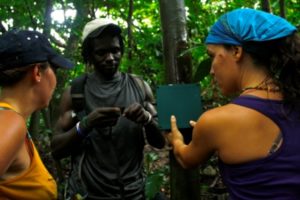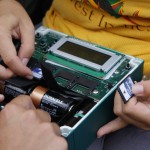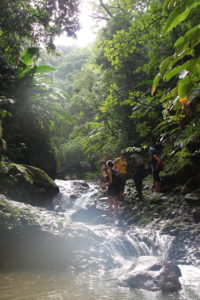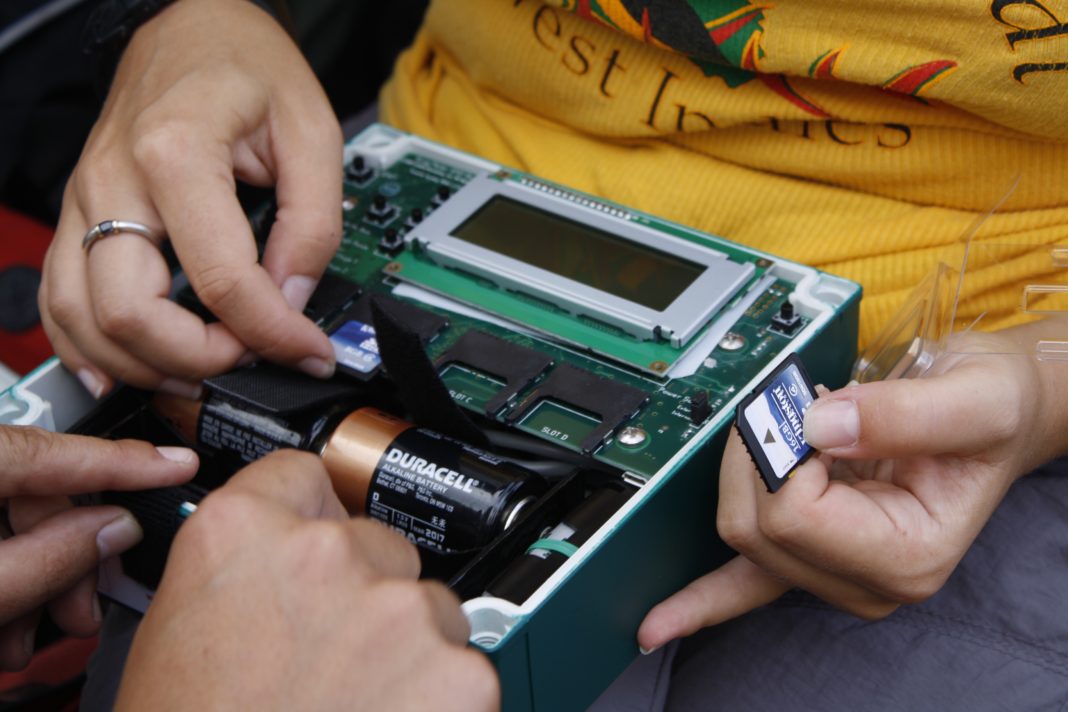If a Mountain Chicken calls in the forest and no one is there to hear it, does it still make a sound?

One of our main tools for finding surviving frogs, both released and native ones is the sound of the males’ calling. They perch themselves on a rock to bellow out their barks and the sound travels far across the ghauts and hills. The reasons for their calling are probably several, but I think I like Mappai’s interpretation the best: “They are expressing their emotions, man!” When we do a nighttime survey of an area, we listen out for this barking sound and then follow it to find the frog in concert. It can be quite the walk! Or climb, scamper and crawl…

Since it would be impossible for us to get into every survey area every night all night, the team has been strengthened with a bunch of Song Meters, or “frog loggers”. These are stereo recording devices mounted to tree trunks in chosen locations. They record all sound within human hearing distance for 45 minutes every hour from 6 PM to 6 AM. The data is digitally stored and will then be run through a specific soft ware to pick up any frogs that might have been calling. So now we really can be everywhere all the time at the same time!
Another good thing about the frog loggers is that it gives us a good excuse to go out into the forest at daytime. It is just so different to see it all in the sun light, it’s hard to believe it’s the same place. The tarantulas are fast asleep in their ground holes, only the cane toads seem to be going round the clock. Birds are cheering between the Heliconia and the water of the ghaut pools and waterfalls is crystal clear… Are you jealous yet?

– Jenny Liman







